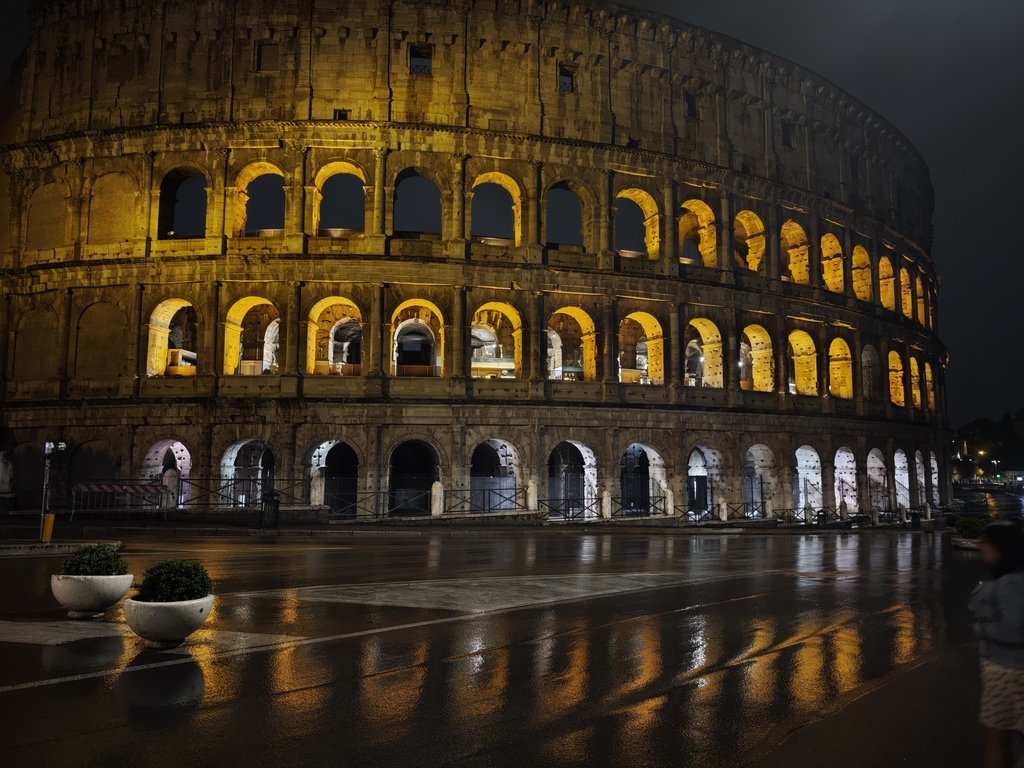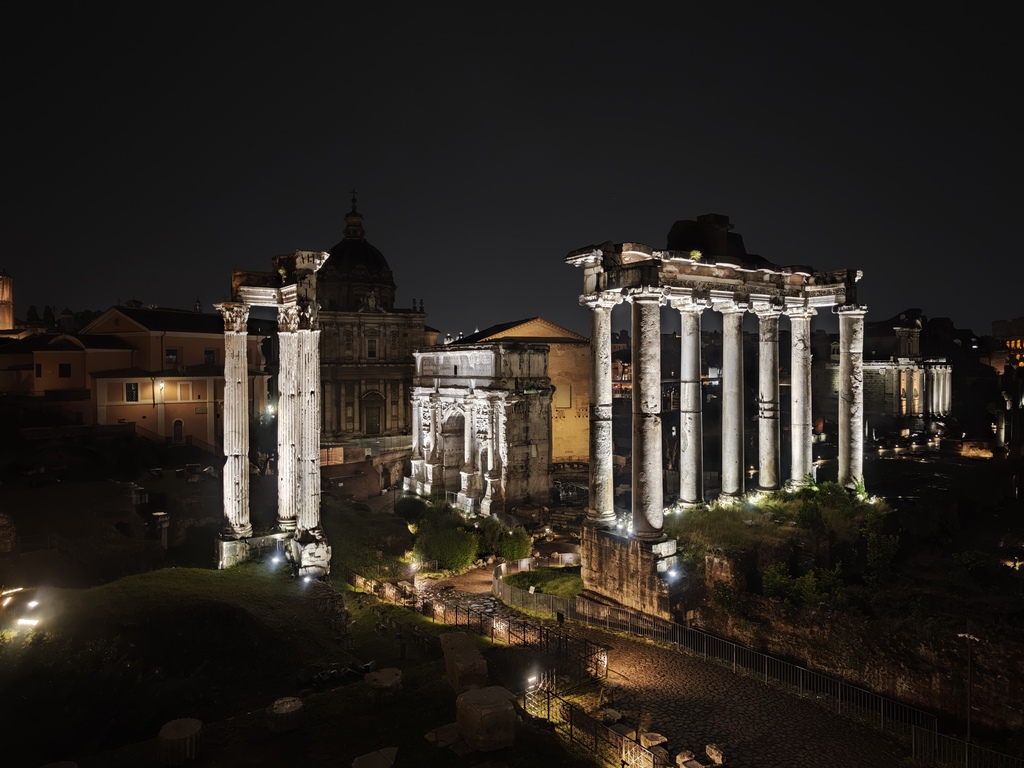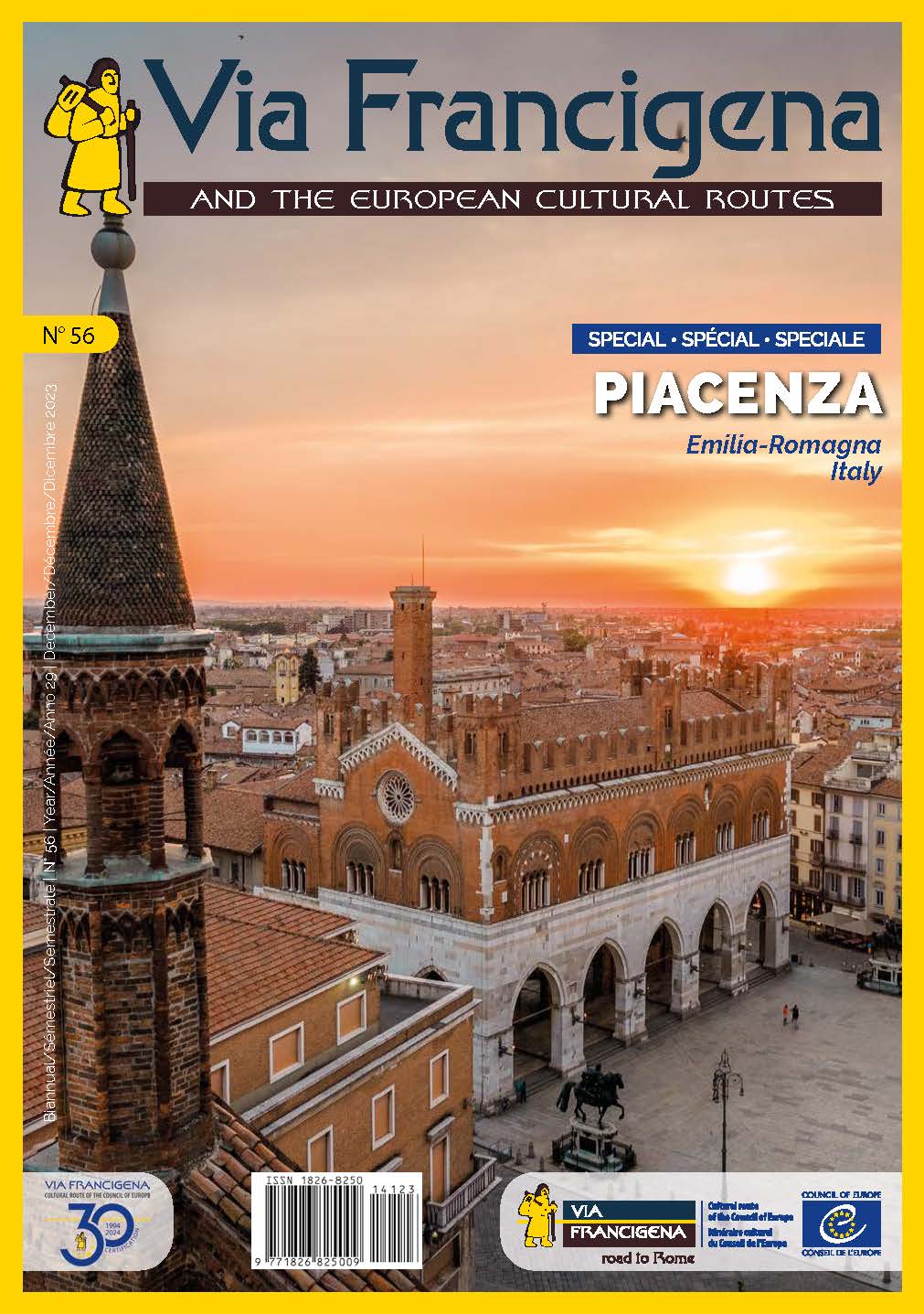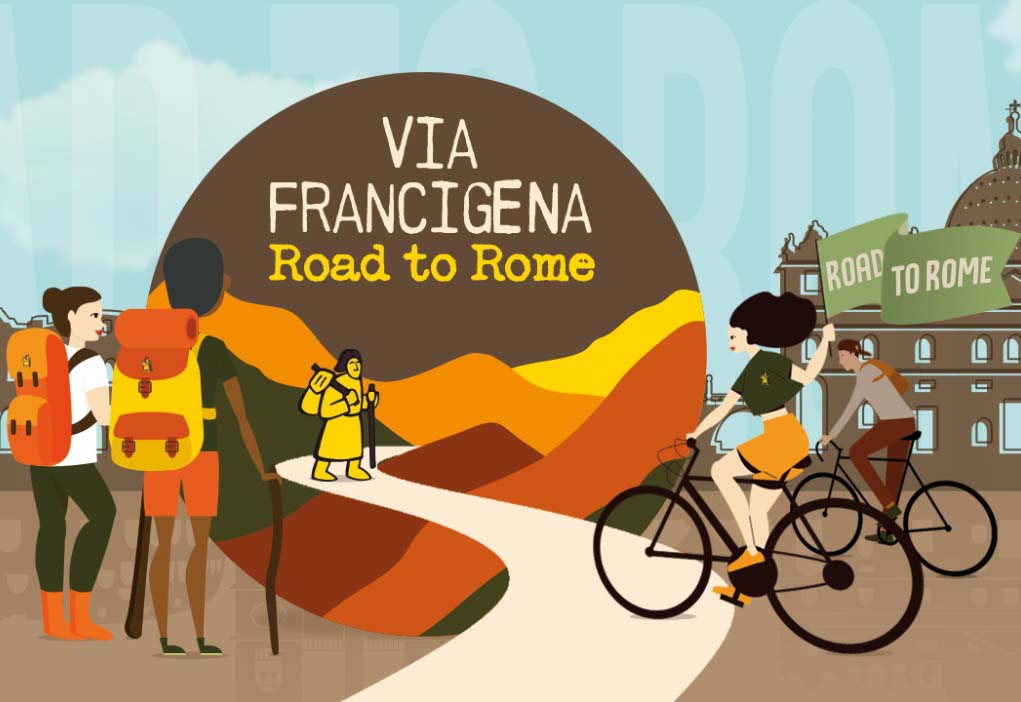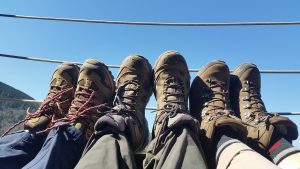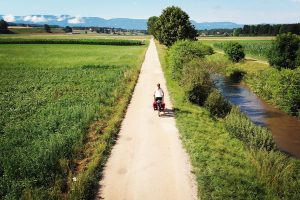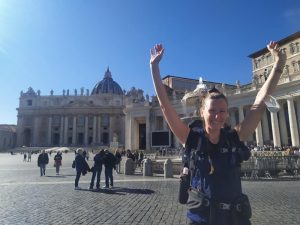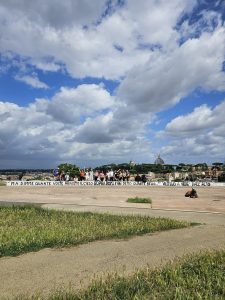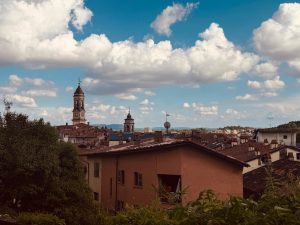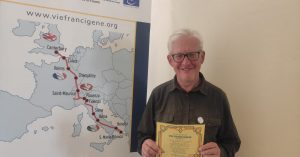If it’s true that all roads lead to Rome, then you have to start somewhere. Here we share our walking experience in and around the Eternal City: one destination, three routes, and plenty of ideas and tips for your slow travel journey. Rome awaits – but next time, walk there!
What comes to mind when you hear “Rome”? 💭
Among the most common answers: the Colosseum, carbonara, “Daje Roma daje”, St. Peter’s, gladiators… you know, the usual. But as travellers hungry for authentic, slow-paced experiences, on the journey we’re about to recount, we were looking for something more – and luckily, we found it!
As the European Association of the Via Francigena ways (EAVF), at the end of May we accepted an invitation from the “Cammini verso Roma” (“Walking towards Rome”) project to take part in an international press tour designed to discover the Eternal City and its beautiful surroundings from new and unusual perspectives. The adventure, organised by Zètema Progetto Cultura during the Jubilee Year, included EAVF’s social media manager Nicole Franciolini, along with an international team of 15 bloggers, content creators and journalists from across Europe – and beyond!
The result? Four days full of beauty, authenticity, history, flavours… If you’re planning a trip to Rome, take note: this article is written just for you. For you who seek beauty beyond the typical postcard views, for you who want to taste Roman pizza and supplì in a restaurant that still makes them the same way it did twenty years ago – with the same decor too. For you who love contemporary architecture, who want to explore the small cultural hubs that keep the city’s life buzzing just steps from the tourist hotspots. For you who find poetry in every street, in every neighbourhood (quartiere)…
For you who wouldn’t say no to a tasty break by the lake – because let’s be honest… who are we to turn down wild strawberries from Nemi served on shortcrust pastry with Chantilly cream after a long woodland walk? 🍓
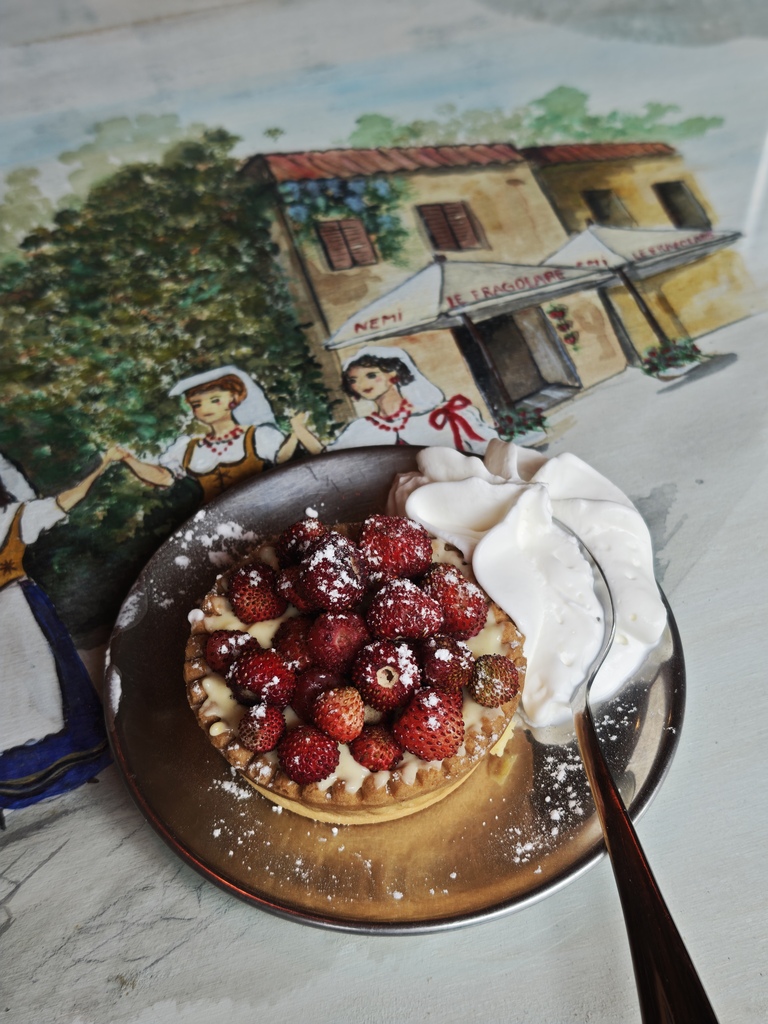
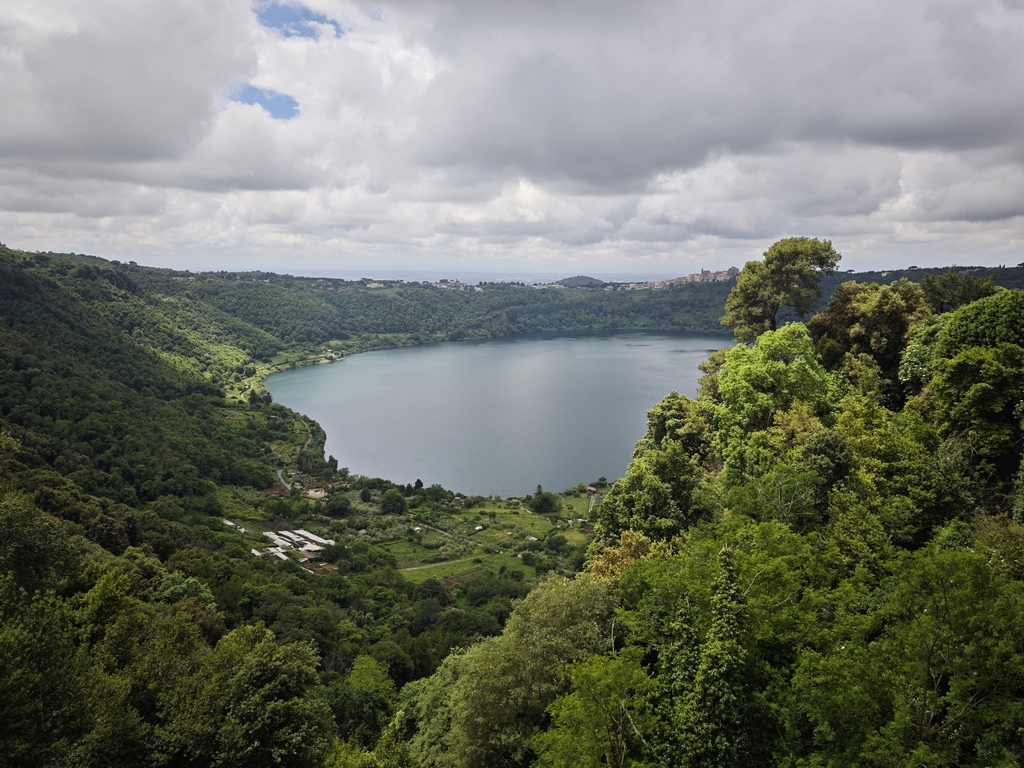
If those strawberries have already won you over, keep reading – we’ve got so much more to share!
1. The unexpected Rome: 3 walking routes and many ideas for a different perspective on the Eternal City & its surroundings
In the next sections, we retrace our steps with the “Cammini verso Roma” project to highlight everything we discovered, admired, photographed (and ate! 🤭) on our way to the Eternal City and its breathtaking surroundings. Or rather, ways in the plural – because we travelled three:
- The Via Francigena (northern stretch)
- The Via Francigena (southern stretch, also known as the Via Francigena nel Sud – Via Francigena in Southern Italy)
- The Via di Francesco or St Francis’ Way (often confused with the Via Francigena, but in fact a distinct route)
Get your pen and notebook ready: between must-see places, unusual spots and delicious Roman traditional dishes, this article is full of highlights and practical tips to help you plan your next walking journey in and around Rome. Each route comes with a short technical guide and a few curiosities – essential facts to walk mindfully and with a spirit of discovery!
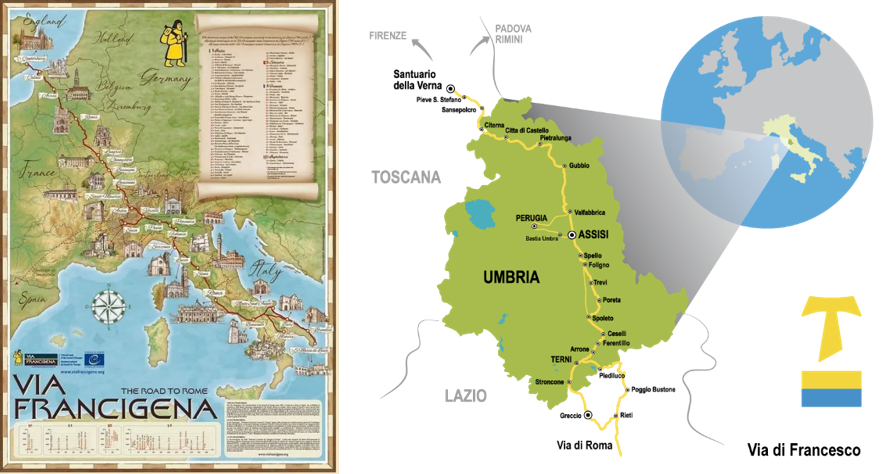
2. The Via Francigena – Northern Stretch
2.1. Information and Technical Details
- Starting point: Canterbury, UK
- End point: Rome (then continuing to the ports of Puglia down to Santa Maria di Leuca)
- Length: 2,200 km
- Official stages: 105 + numerous official variants (GPS tracks available here or on our App)
- Countries crossed: 5 – United Kingdom, France, Switzerland, Italy, Vatican City
- Regions traversed: 13 – Kent (UK); Hauts-de-France, Grand Est, Bourgogne-Franche-Comté (France); Canton Vaud, Canton Valais (Switzerland); Valle d’Aosta, Piedmont, Lombardy, Emilia-Romagna, Liguria, Tuscany, Lazio (Italy)
Did you know… 👇
✅ The Via Francigena is one of the historical routes – also known as Vie Romee – that connected northern Europe to the Eternal City. The name itself, Via Francigena (meaning “road originating from France”), reflects the major role of this route as the main axis linking the lands of the Frankish Kingdom to Rome.
✅ The current path follows the journey of the Archbishop of Canterbury, Sigeric, who in 990 AD documented in his diary the 79 stages (submansiones in Latin) of his return journey from Rome, where he had received the Pallium from Pope John XV. Could Sigeric have imagined that his diary would become the historical foundation for reconstructing today’s route, inspiring so many modern pilgrims?
✅ Last but not least, since 1994 the Via Francigena has been recognised as a Cultural Route of the Council of Europe, alongside the Camino de Santiago and other major European pilgrimage routes. The European Association of the Via Francigena ways (EAVF), founded in Fidenza in 2001, has been recognised since 2007 by the Council of Europe as the official body responsible for henancing and promoting the route.
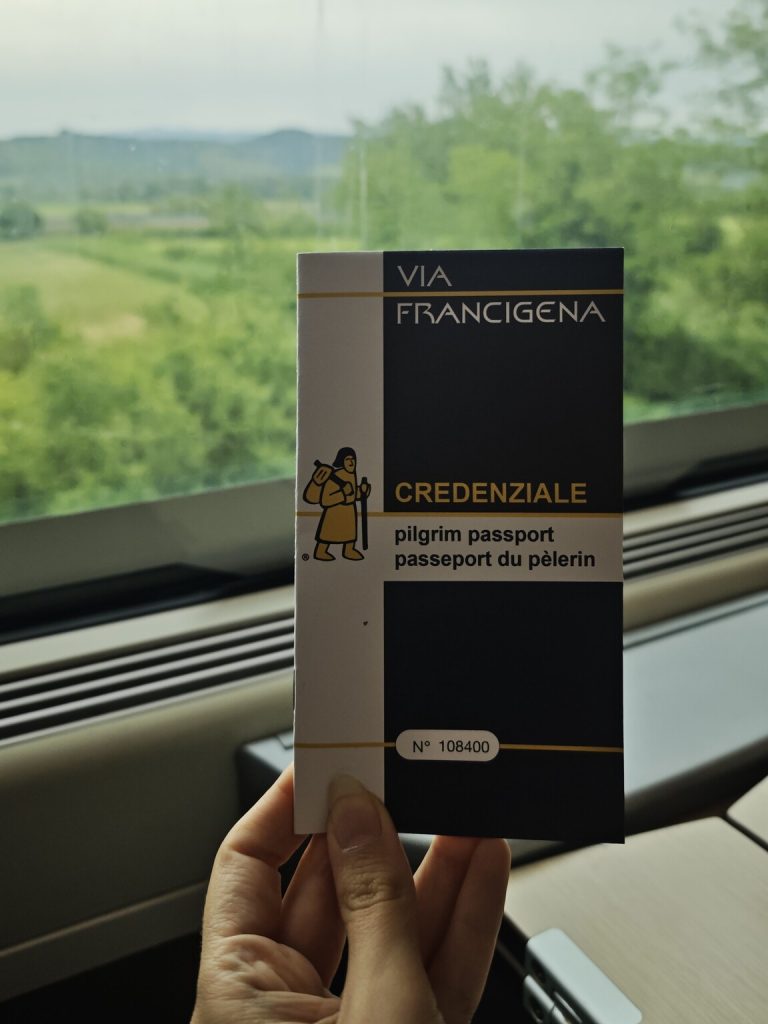
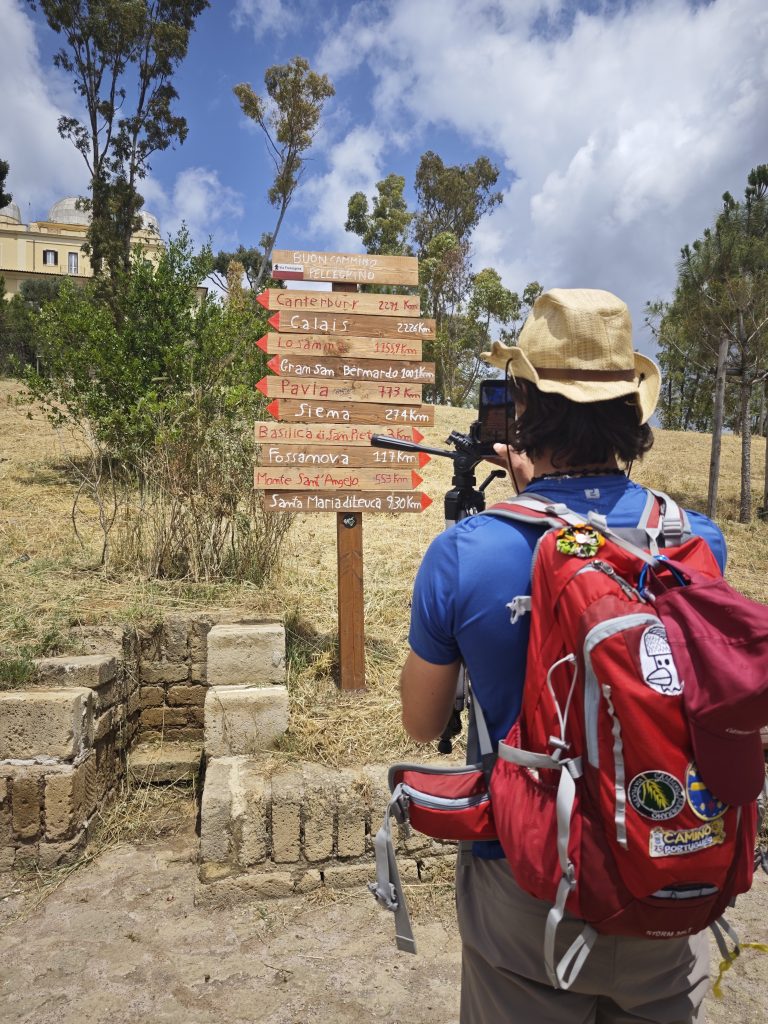
2.2. Walking into Rome, Part I: Stage 45 of the Via Francigena
Rome: 1,285 km², 2.7 million inhabitants. Countless streets, buildings in every shape, concrete jungle, traffic and noise – all obstacles between the pilgrim and their long-awaited destination. Let’s be honest: it clashes with the idyllic image of the journey’s end and, practically speaking, forces the walker to contend with busy roads, narrow pavements and the fading memory of quiet trails.
While the chaos of a major city near the journey’s end is perhaps unsurprising, what is surprising is that a good portion of Stage 45 – the one from La Storta to Rome – actually leads you through unexpectedly green and peaceful areas. A pleasant and unexpected part of the route, soothing the shock of the city’s embrace. A balm for the soul – and the feet – with a few extra kilometres of soft ground.
As we walked, pausing for photos and snacks, a thought emerged among the group: managing walking routes must be no easy task – especially near large urban centres. After miles spent among fields and forest paths, small villages and gravel roads, returning to city life is always a bit of a jolt.
Yet local authorities are making a real and ongoing effort. On this tour, we appreciated several recent improvements to the Via Francigena and the other routes to Rome, all aimed at making them more welcoming, safe and accessible. By following a less conventional itinerary, we explored the different ways to reach the Vatican – and found some truly fascinating places, walking both along the ‘traditional’ Stage 45 leg and its modern alternative.
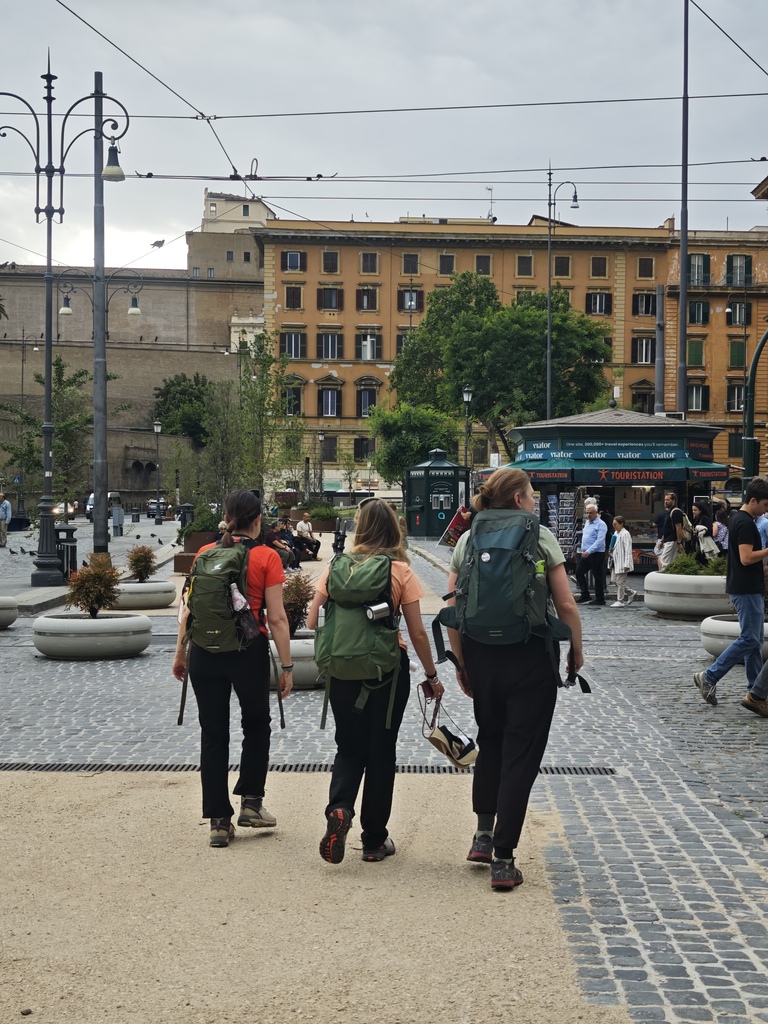
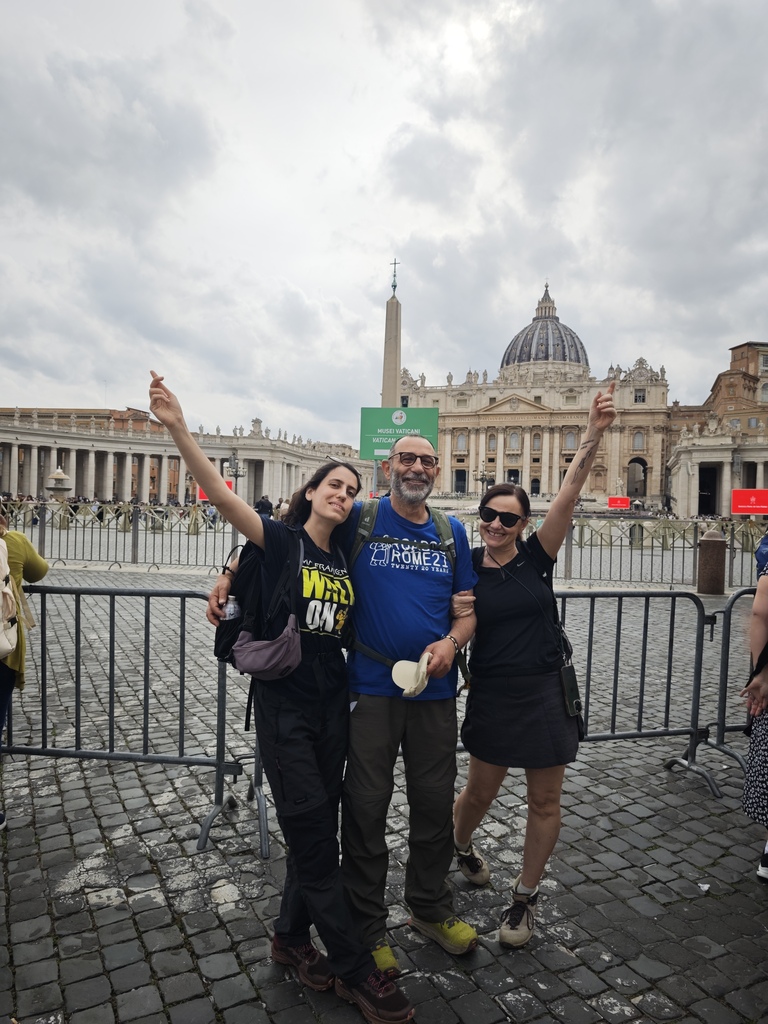
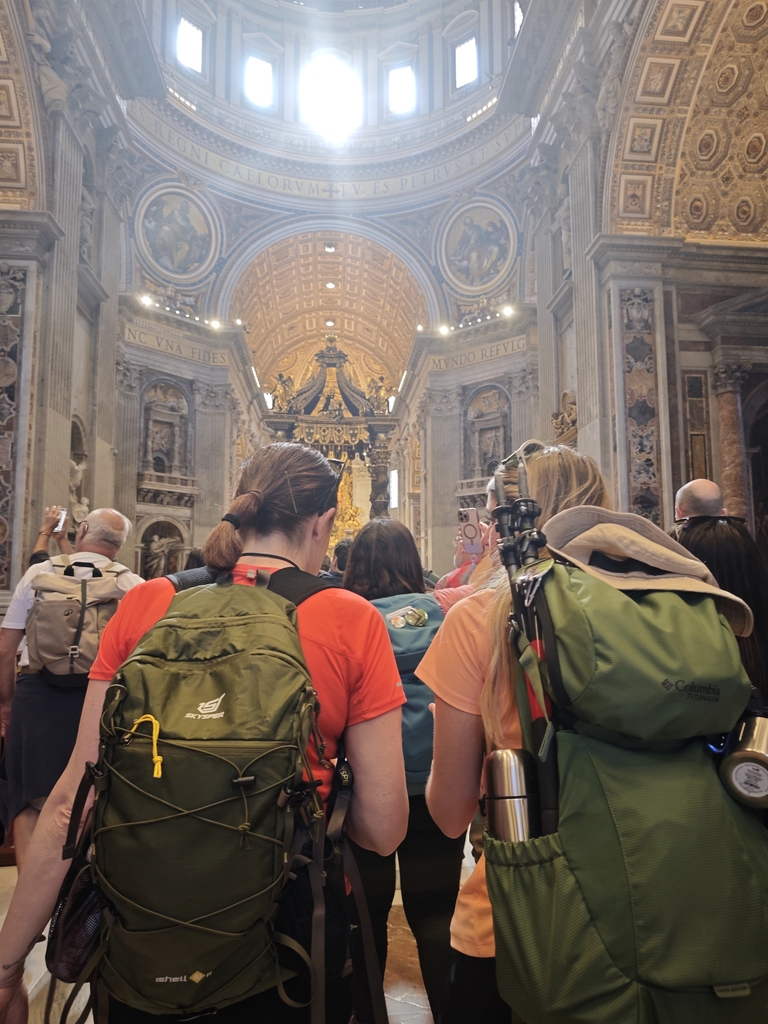
In the next paragraph, you’ll find all the places that left the biggest impression on us 👣
2.3. Highlights of the stage ✨
📍 Insugherata Nature Reserve
Hard to imagine, but true: right on the edge of the city lies the Insugherata Nature Reserve – a protected area of 740 hectares, entirely within the municipality of Rome, between Via Trionfale and Via Cassia, crossed by the Via Francigena. The official route winds through it for just over 4 km, from its entrance near the GRA (Rome’s ring road) – specifically at number 1081 – to the exit on Via Augusto Conti.
We were struck by the silence and tranquillity of this green oasis. Walking through its lush vegetation – home to many animal and plant species – not only helps avoid several kilometres of traffic on Via Cassia, but it’s also easy to forget you’re just steps from the city!
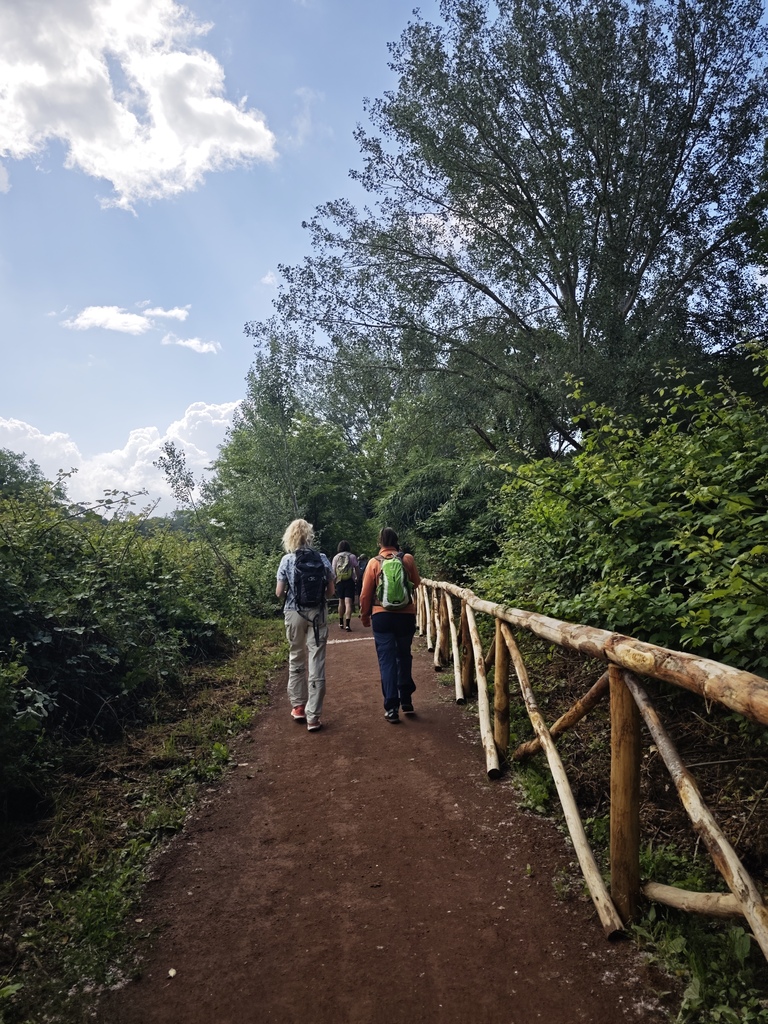
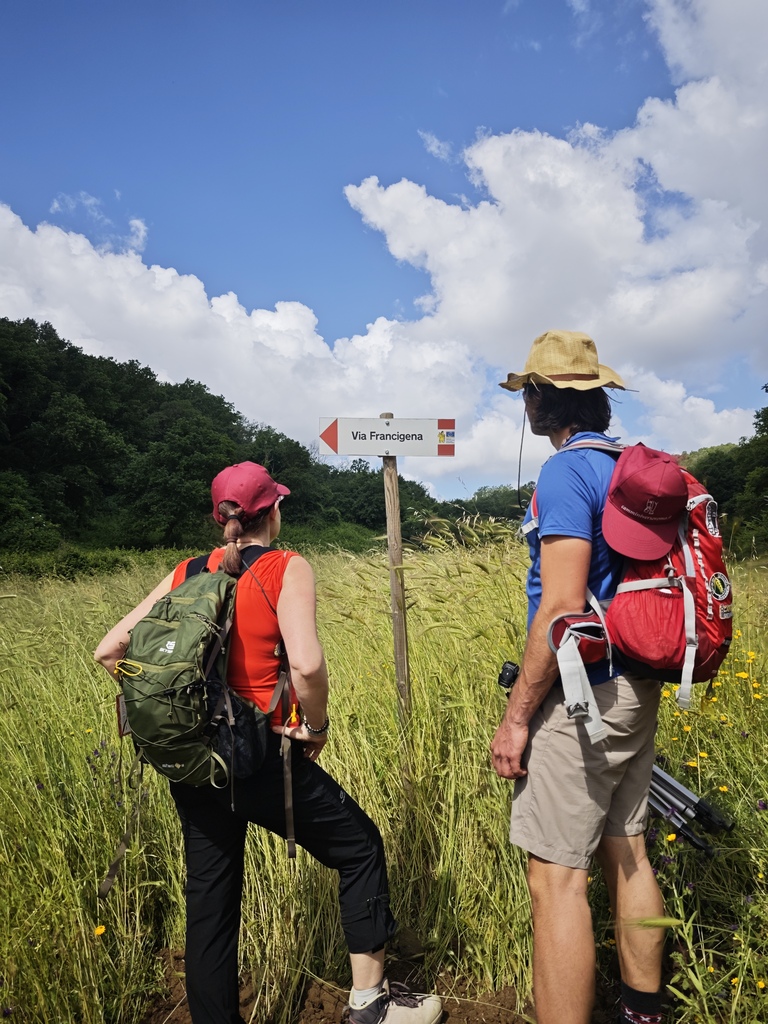
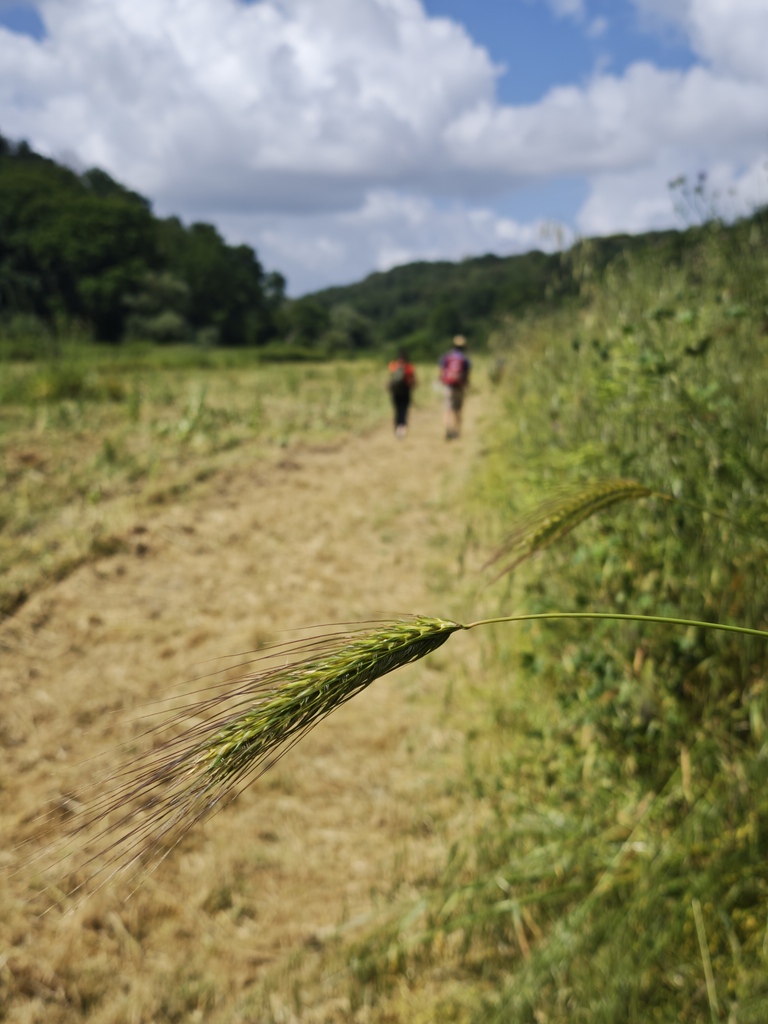
From September 2024 onwards, the Reserve has seen significant maintenance, improving trail safety and signage.
After the Insugherata, pilgrims face a choice: reach St. Peter’s via the Monte Mario Nature Reserve, or take the alternative Monte Mario – Monte Ciocci pedestrian and cycle path? 🤔 During our trip, we explored both and concluded: it’s entirely a personal preference. The choice is yours, dear pilgrim! 😊
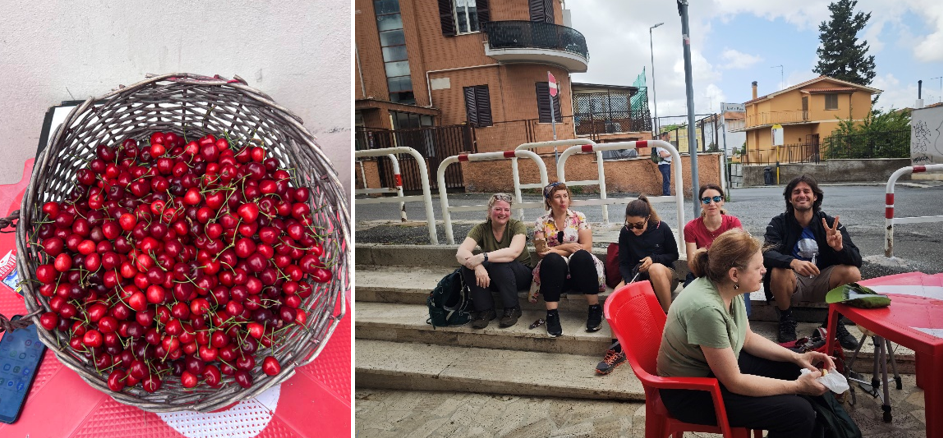
The cherry on top of this stretch was, quite literally, a cherry – or rather, a whole kilo of them – that appeared like a mirage at the end of the steep climb out of the park.
The sweetest way to ease back onto the asphalt 🍒
📍 Monte Mario Nature Reserve
This stunning route retraces the path ancient pilgrims once walked.
The Reserve takes its name from the tallest hill in the Farnesina area (139 metres), which – now as in the Middle Ages – overlooks the Tiber Valley. Back then, Monte Mario was known as Mons Gaudii (Mount of Joy), and it’s easy to understand why: after a long and difficult journey, pilgrims would finally catch sight of St. Peter’s and the Eternal City in all its splendour.
The shady path through holm oaks leads to a first panoramic viewpoint – with benches and tables, it’s perfect for a scenic picnic. We carried on among blooming broom and pine trees to the second viewpoint, recently upgraded with new facilities for a restful stop.
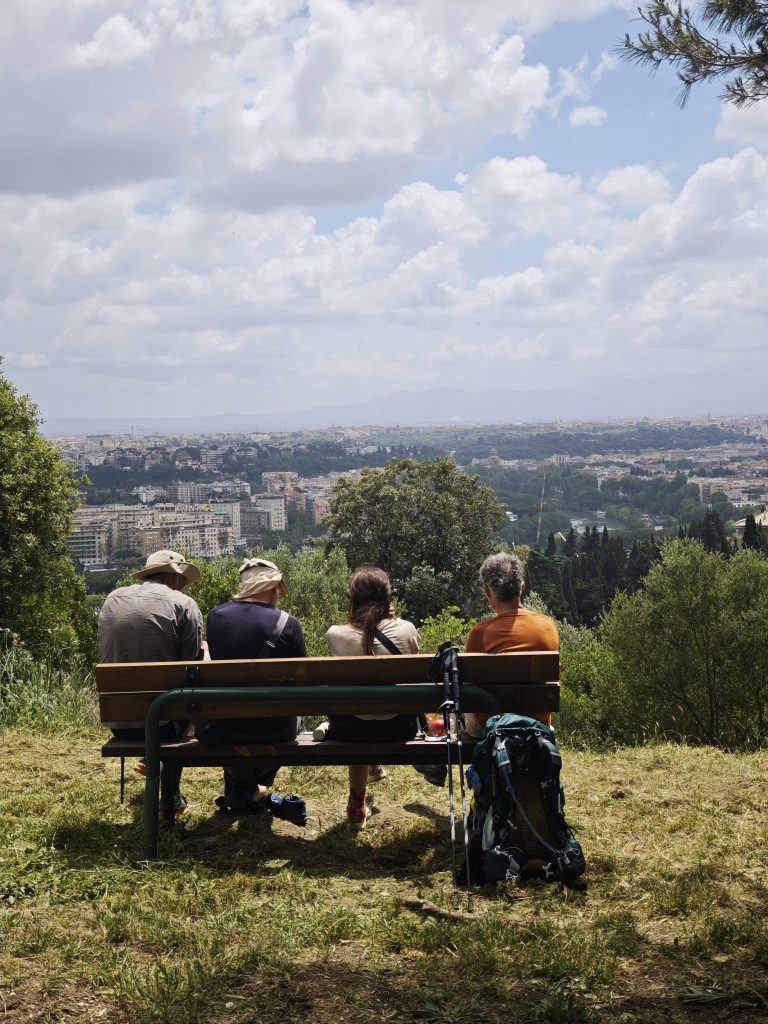
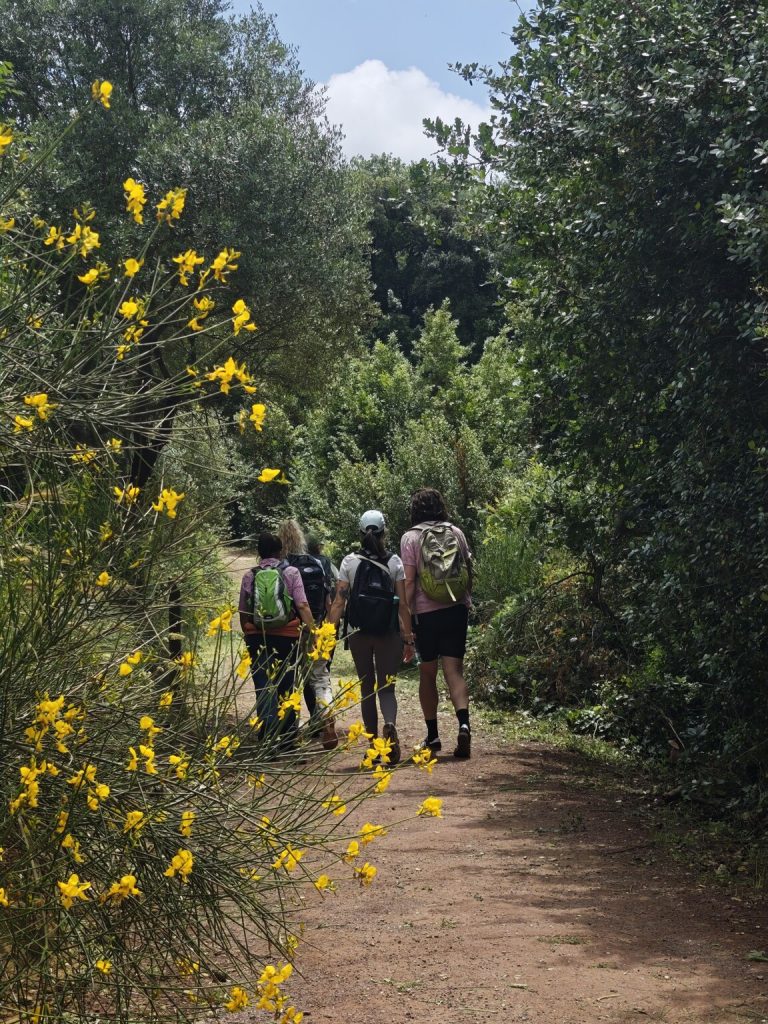

After indulging in perfectly ripe mulberries – as if they’d been waiting just for us – we pressed on and finally reached that spot dear to all pilgrims: the terrace where you get your first breathtaking view of Rome and the dome of St. Peter’s.


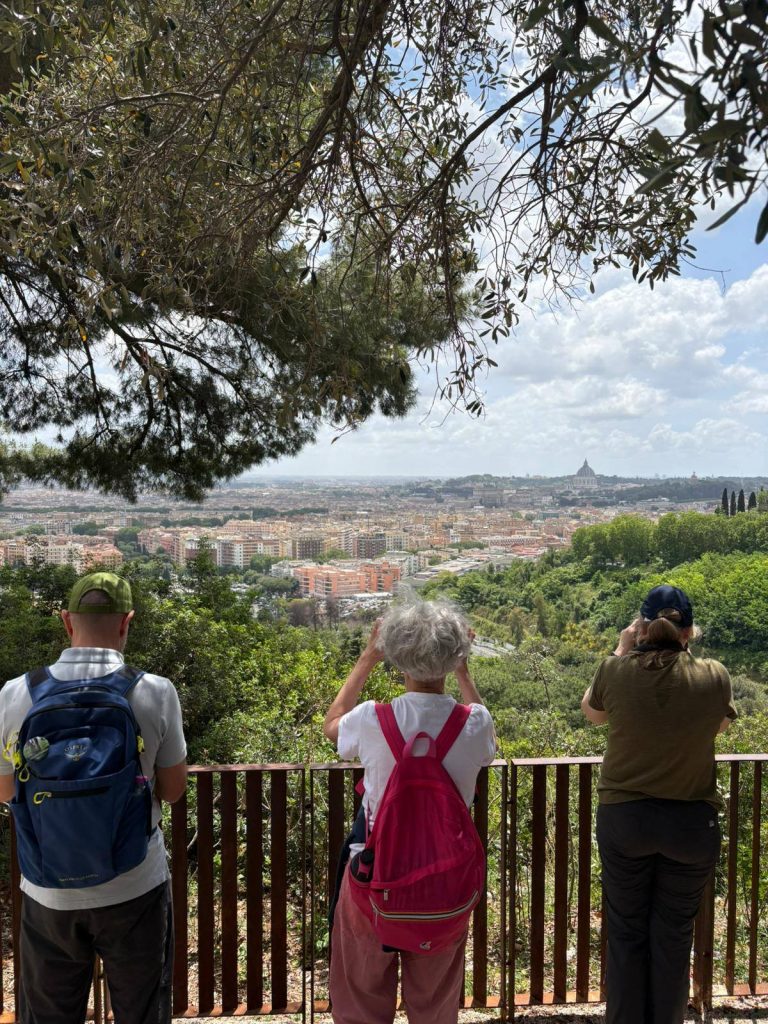
You might think, “What must Sigeric have felt turning to see the dome behind him…” But no! At the time of his journey, the dome didn’t yet exist – it wasn’t started until 1506, centuries later. Just one more reason to pause and take in the wonder, even for good old Sigeric.
📍 Monte Mario – Monte Ciocci pedestrian and cycle path
This variant begins about 250 metres after the paved climb out of the Insugherata Park. It’s ideal for larger groups, people with reduced mobility, or anyone in search of a gentler, less demanding trail.
The path runs past the Gemelli hospital and the Balduina district, weaving between buildings and green spaces, offering a snapshot of local life: dogs being walked, joggers, grandparents teaching grandchildren to cycle or recover from rollerblade mishaps. Eventually, you reach Monte Ciocci’s viewpoint – and the view speaks for itself.
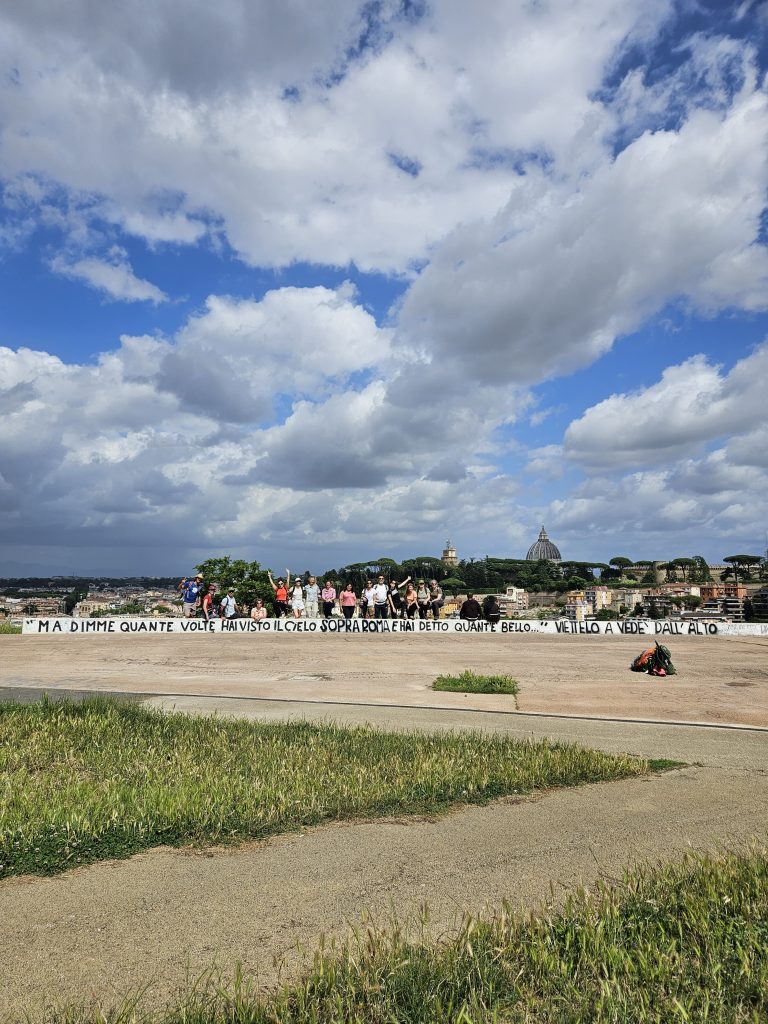
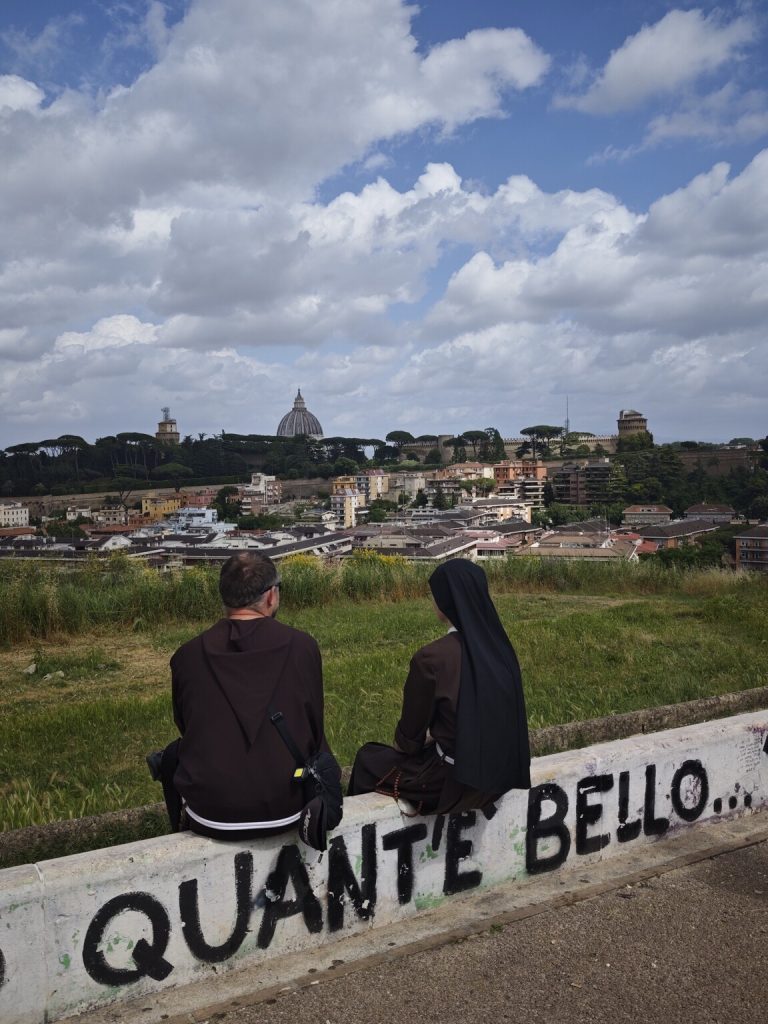
Ever seen how beautiful the sky over Rome is? We have ❤️
“Viettelo a vede’ dall’alto” – Go see it from above too! 😮
To finish in style, we crossed the newly inaugurated bike and pedestrian bridge (April 2025) that leads directly to St. Peter’s via the old Vatican railway bridge. This addition extends the Monte Mario – Monte Ciocci route by 1.5 km, bringing it to 6.5 km in total.
Walking toward your destination along this elevated path feels almost surreal – try it and see!
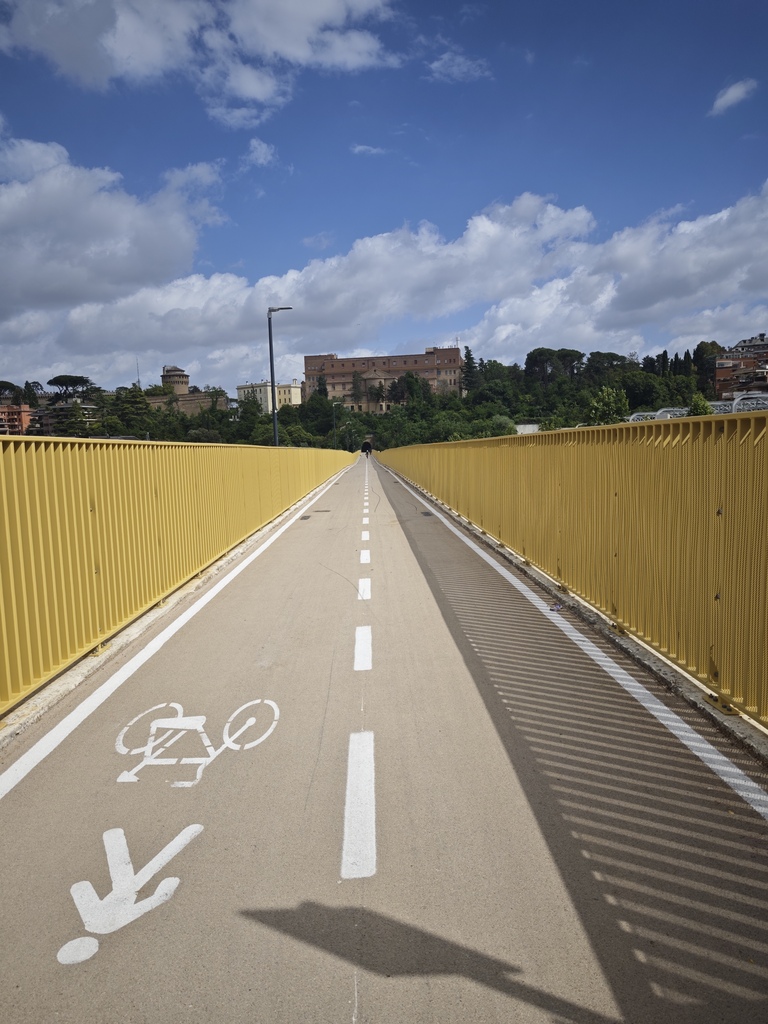
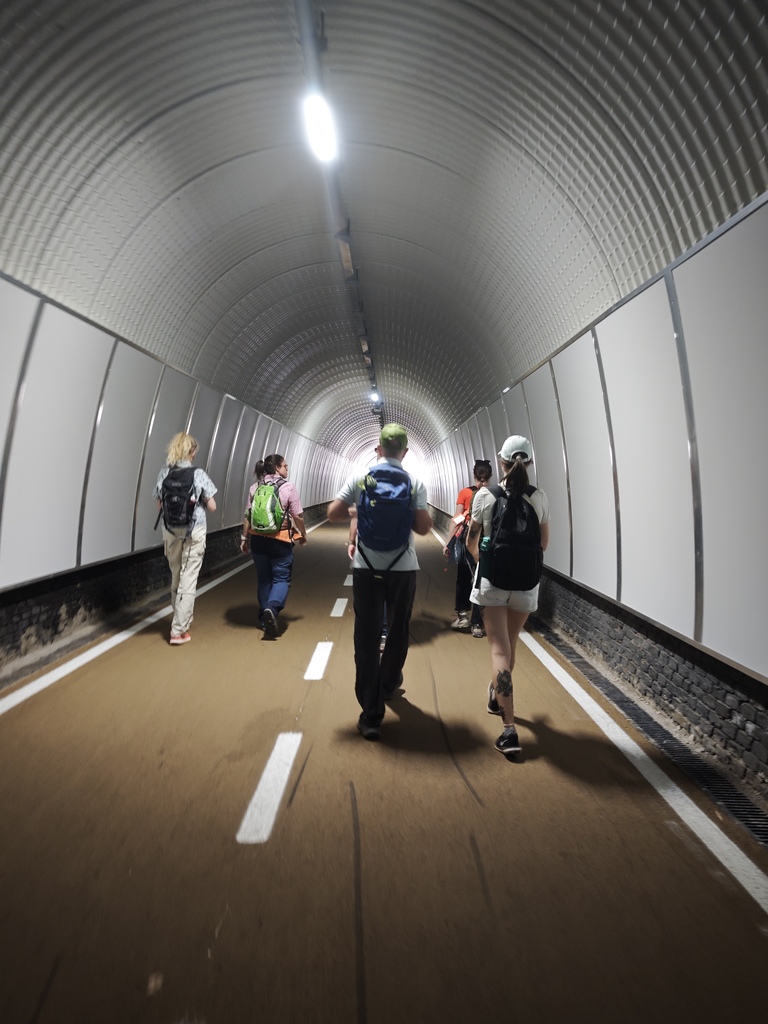
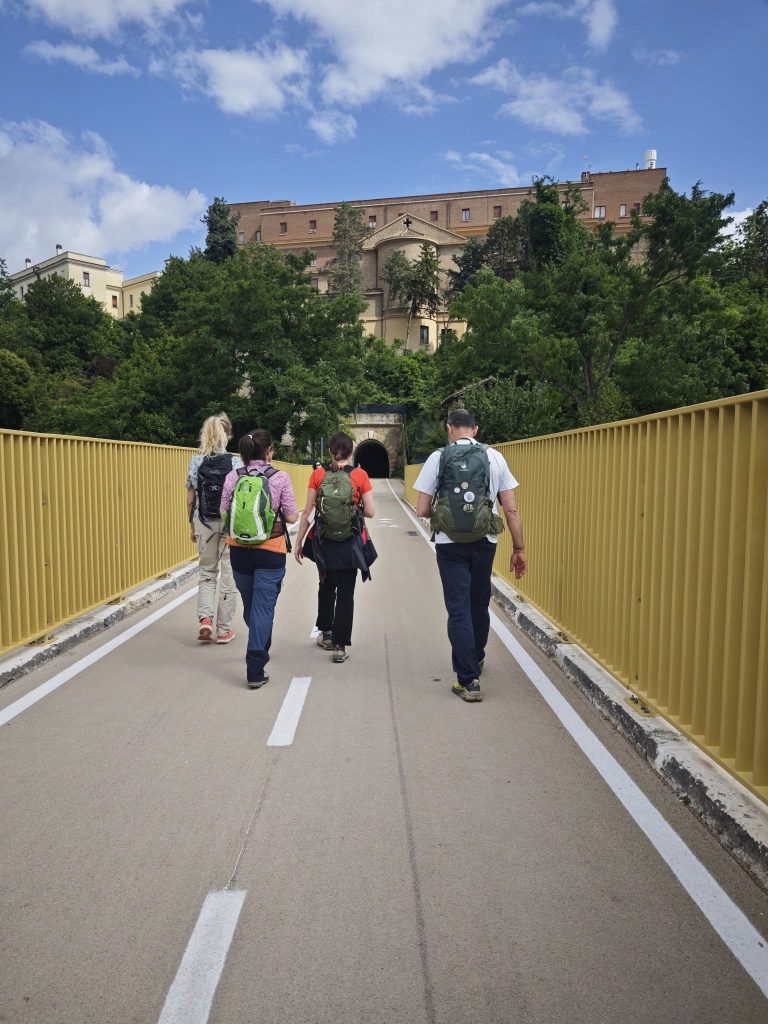
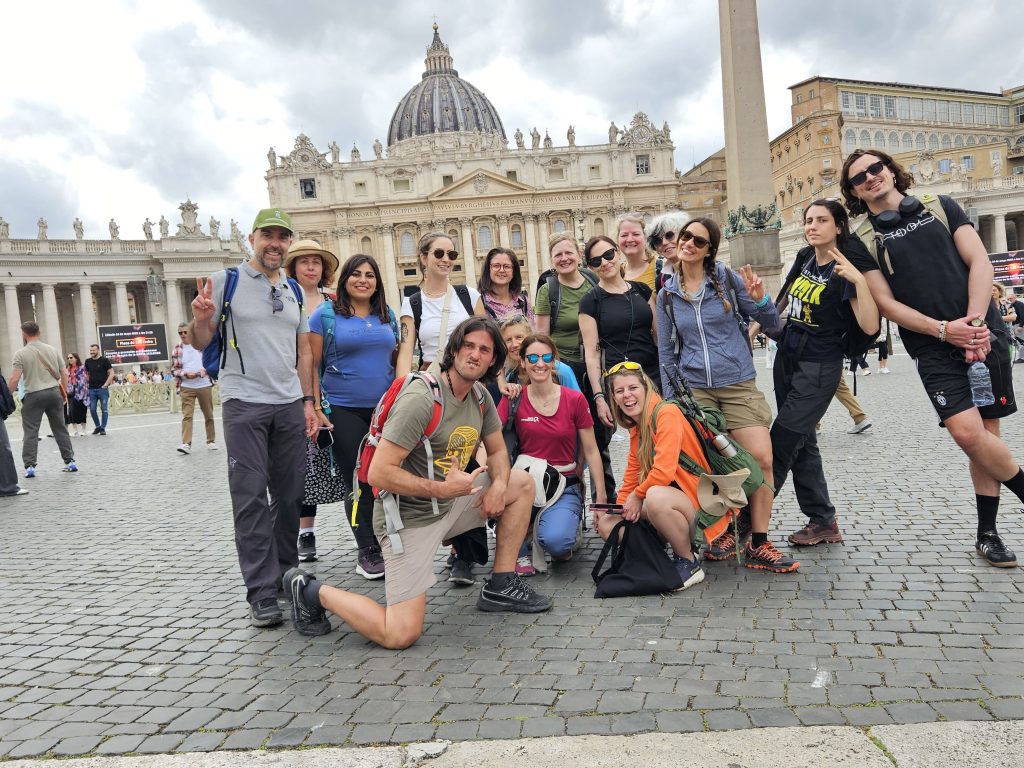
St. Peter’s is stunning, right? But our walking journey to discover Rome and its surroundings through its pilgrimage routes doesn’t end here! 👇
In the next episode, we’ll take you along the Via Francigena in Southern Italy the South
and the Way of St Francis. Stay tuned! 🔜
📌 The “Cammini verso Roma” – “Walking towards Rome” project
Interest in walking routes is growing steadily around the world. In recent years, a renewed awareness and greater attention to sustainability have made them one of the most popular and appreciated forms of experiential travel. And what better occasion than the 2025 Jubilee Year to set off on a journey towards Rome along its ancient paths?
As part of this meaningful year, the project “Walking towards Rome” (“Cammini verso Roma”), curated by Zètema Progetto Cultura, aims to shine a spotlight on the routes leading to the Eternal City. The initiative seeks to enhance the full length of these historic trails, including the so-called “final” stretches near the capital and its surroundings. Often overlooked for being less scenic or affected by urban challenges, these sections actually have so much to offer.
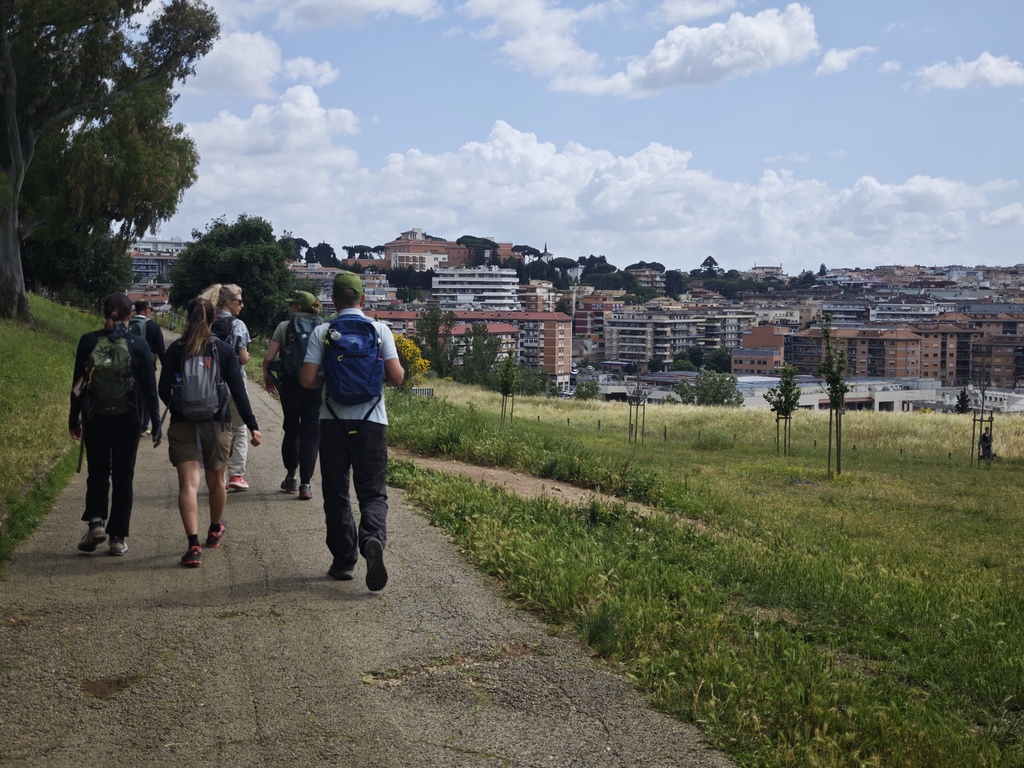
“Cammini verso Roma” is a complex but rewarding effort in cultural promotion, taking shape through information campaigns, storytelling, events, and initiatives. In this way, pilgrims and walkers, tourists and locals alike are invited to discover a land full of surprises — at a slow pace, and with a renewed sense of awareness: both of themselves and of the world around them.
The project is supported by a podcast and a rich calendar of events and walks open to everyone.
CLICK HERE for more information on the “Walking towards Rome” project
